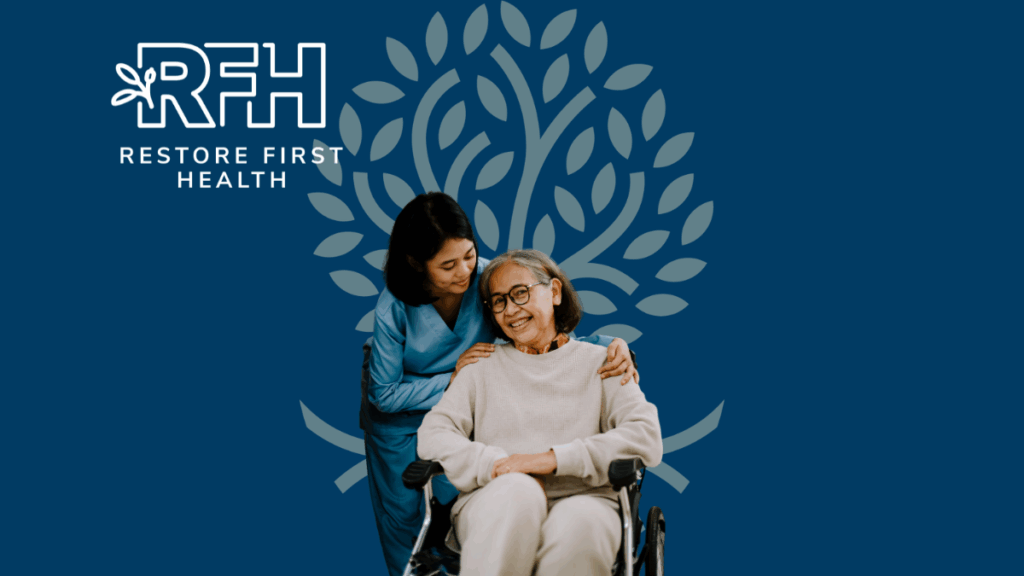Living with a chronic wound can feel like life is on pause. Whether you or your loved one are spending most days in bed or in a chair, please know this: healing is still possible, and you are not alone.
Research shows that even small improvements in mobility like gentle repositioning, light stretches, or sitting upright can make a big difference in circulation, reduce pressure, and improve overall wellbeing.
Just as important? Hope itself can improve your body’s ability to heal.
Today, we’re sharing practical ways to help you gently increase movement, nurture hope, and take back a sense of progress, no matter where you’re starting.
Why Mobility Matters (Even the Smallest Movements)
You don’t have to start walking laps to see benefits. Simply shifting positions or doing light movement helps:
- Increase blood flow to the wound area, supporting tissue repair.
- Reduce pressure that can cause or worsen pressure ulcers.
- Ease stiffness and pain from long periods of immobility.
- Support mental health by reducing feelings of helplessness.
If you or your loved one is mostly bedridden, think of movement as a spectrum of little wins – even changing position counts.
The Healing Power of Hope
A growing body of research shows that hope is a healing strategy. Patients who feel hopeful often experience:
- Better adherence to care plans.
- Improved immune function.
- Faster healing times.
- Greater resilience in the face of setbacks.
You deserve hope, no matter what your wound looks like today.
One-Week Gentle Mobility Routine
Important: Always check with your care team before starting any new movements.
This simple routine is designed to be adapted whether you’re in bed, using a wheelchair, or able to stand briefly.
Day 1 – Repositioning Awareness
- Set reminders to shift weight or change position every 2 hours.
- If in bed, roll slightly from one side to the other with assistance.
- Take 3 deep breaths while repositioning to improve circulation.
Day 2 – Arm and Hand Activation
- Gently raise each arm above the head (or as high as comfortable), hold 5 seconds, lower.
- Open and close your hands 10 times.
- Do this 2–3 times a day.
Day 3 – Ankle and Foot Pumps
- While lying or sitting, flex feet up and down 10 times per foot.
- Rotate ankles in circles.
- Repeat 3 times per day to reduce swelling.
Day 4 – Seated Upright Time
- If possible, spend 20–30 minutes upright in a supportive chair.
- Use pillows to maintain alignment.
- This helps lung expansion and digestion.
Day 5 – Neck and Shoulder Relaxation
- Slowly turn your head side to side.
- Shrug shoulders up and release.
- Repeat gently 5 times.
Day 6 – Guided Breathing & Visualization
- Spend 5 minutes imagining a positive healing image.
- Inhale slowly for 4 counts, exhale for 6 counts.
- Focus on gratitude or a hopeful thought.
Day 7 – Gentle Assisted Stretch
- With a caregiver, gently stretch arms overhead or to the sides.
- Lightly stretch legs by bending and straightening at the knee.
- Do only what feels safe and comfortable.
Remember that every small movement is progress. Celebrate it.
For more tips like this, check out our other blogs and articles, here
5 Simple Ways to Cultivate Hope

You Deserve to Heal and Feel Supported
At Restore First Health, we believe no wound is too complex, and no patient is too far gone to deserve hope, dignity, and a path forward. Whether you’re taking your first step or simply changing positions, every act of care matters.
If you have questions or want personalized guidance, we’re here to help. Contact us anytime.
References
- Association for the Advancement of Wound Care (AAWC). “Clinical Guidelines for the Management of Wounds.” AAWC, 2020.
https://aawconline.org
- American Diabetes Association. “Wound Healing and Diabetes.” ADA Standards of Care, 2024.
https://diabetes.org
- Snyder, R.J., Cardinal, M. et al. “A Prospective, Randomized, Multicenter Study Comparing Negative Pressure Wound Therapy to Standard Wound Therapy.” Wounds, 2016.
- Snyder, C.R. “Hope Theory: Rainbows in the Mind.” Psychological Inquiry, 1995; 4(4): 325–345.
DOI: 10.1207/s15327965pli0404_2
- Herth, K. “Enhancing hope in people with a first recurrence of cancer.” Journal of Advanced Nursing, 2000; 32(6): 1431–1441.
DOI: 10.1046/j.1365-2648.2000.01640.x
- Restore First Health. Internal Clinical Guidelines & Education Materials. 2024.
- National Pressure Injury Advisory Panel (NPIAP). “Prevention and Treatment of Pressure Ulcers/Injuries: Clinical Practice Guideline.” 2019.
https://npiap.com
